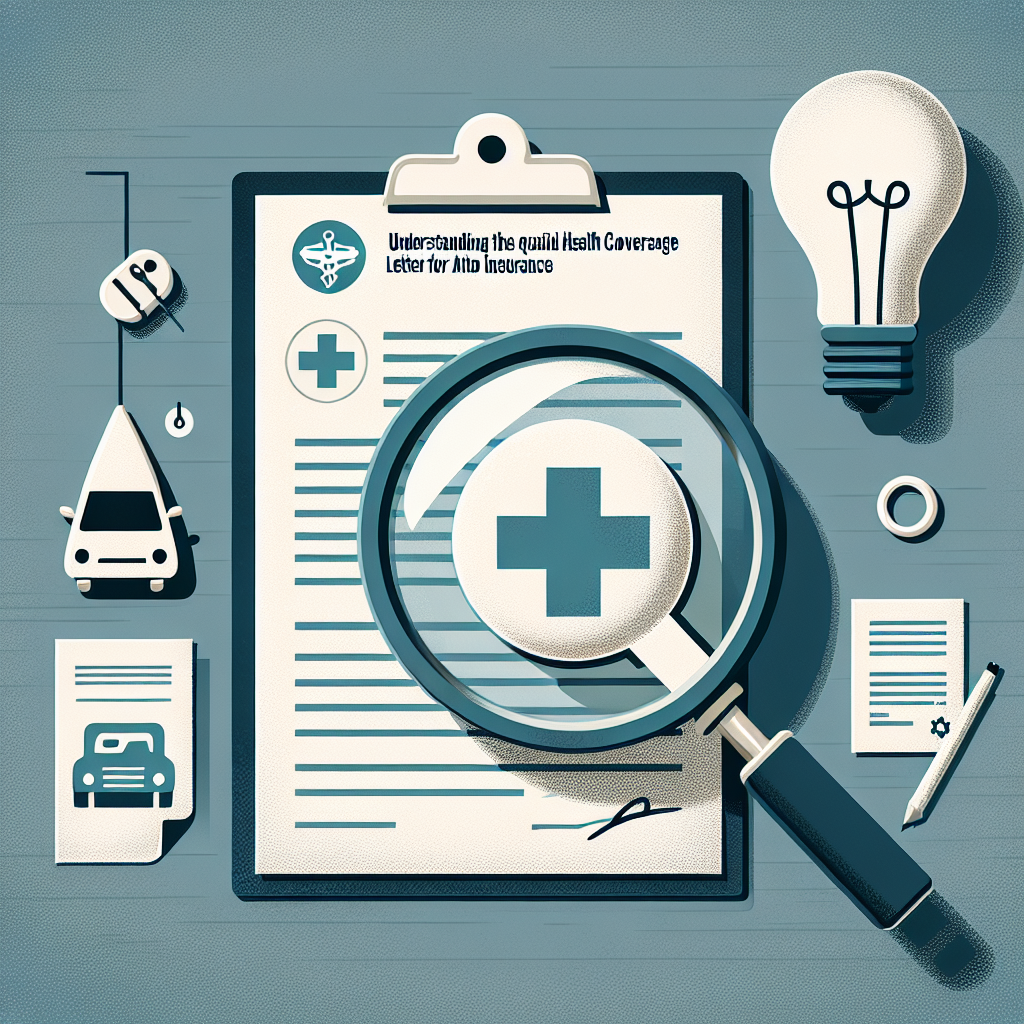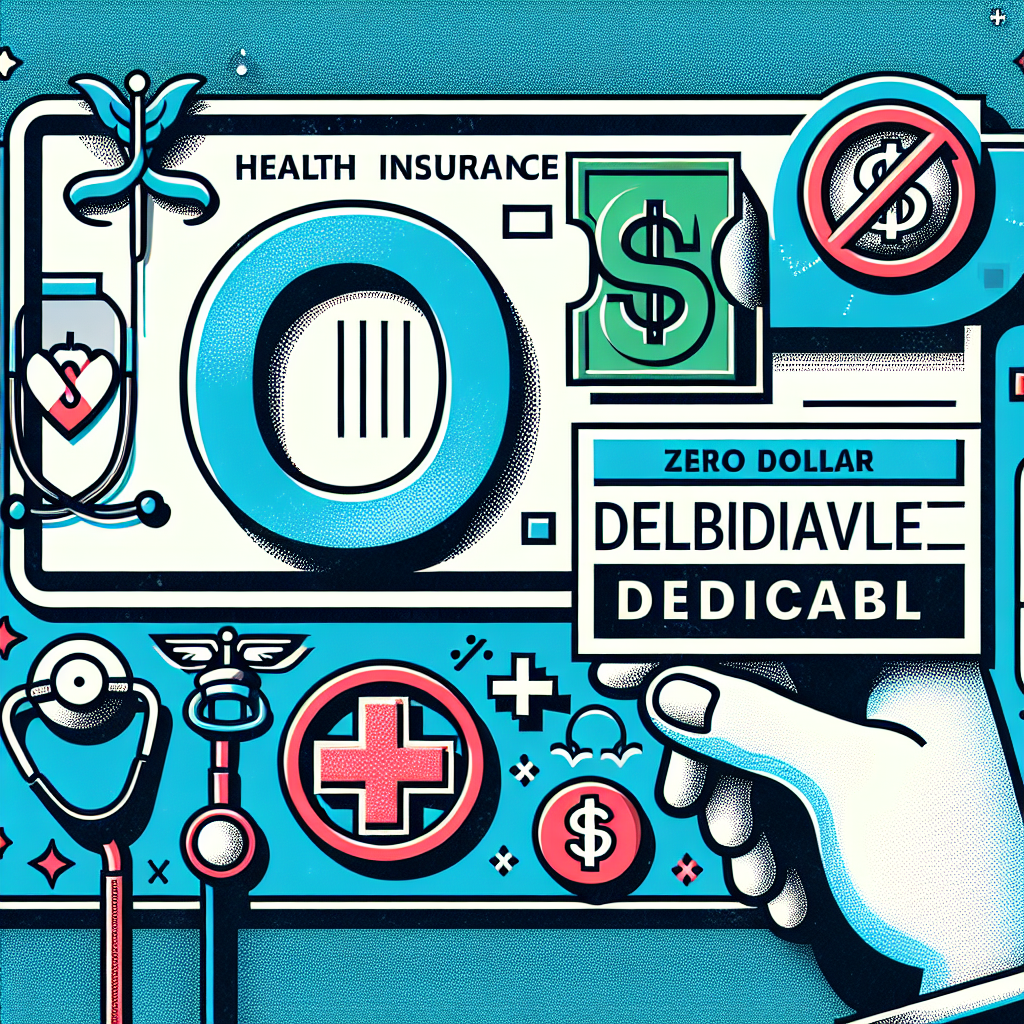Filed under Health Insurance on
Understanding the Qualified Health Coverage Letter for Auto Insurance

When it comes to navigating the world of auto insurance, one might encounter various documents and terms that seem complex at first glance. Among these, the Qualified Health Coverage Letter often stands out as particularly perplexing for many vehicle owners. This essential piece of documentation plays a crucial role in determining how your health insurance impacts your auto insurance needs, especially concerning Michigan's unique no-fault insurance law.
What is a Qualified Health Coverage Letter?
A Qualified Health Coverage Letter is a document from your health insurance provider confirming that your health insurance meets specific requirements. This letter is crucial for Michigan drivers due to changes in the state's auto insurance laws, which now require policyholders to make choices regarding their personal injury protection (PIP) coverage.
Why is it Important?
Understanding the Qualified Health Coverage Letter is vital for Michigan residents because it impacts whether you can exclude PIP medical coverage from your auto insurance policy. Michigan's no-fault insurance reform, which became effective in 2020, introduced several new options for drivers concerning their PIP coverage. This letter determines your eligibility to opt-out of certain coverages and can lead to significant savings on your auto insurance premiums.
Requirements for a Qualified Health Coverage Letter
Not all health insurance plans qualify. To meet the criteria for a Qualified Health Coverage Letter, your insurance must:
- Provide coverage for motor vehicle accident injuries.
- Have an annual deductible of $6,000 or less per person.
If your health plan meets these requirements, your insurer will issue a Qualified Health Coverage Letter, giving you the option to select reduced or waived PIP medical coverage.
How to Obtain a Qualified Health Coverage Letter
To obtain this letter, you'll need to contact your health insurance provider. It's recommended to request this documentation well in advance of your auto insurance policy renewal date to ensure ample time for any necessary adjustments. Some insurers may automatically send this letter if your policy qualifies, while others may require a formal request.
Integrating Health Plans with Auto Insurance
The intersection between health plans and auto insurance policies can be complex, but understanding it is crucial for optimizing your coverage and costs. With your Qualified Health Coverage Letter in hand, you can consider different PIP coverage options. Here’s how:
PIP Medical Coverage Options
- Unlimited Coverage: This is the default option offering unlimited lifetime medical benefits for accident-related injuries.
- Reduced Coverage Options: If you have a Qualified Health Coverage Letter, you can opt for lower coverage levels, including $500,000, $250,000, or $50,000 limits.
- Opting Out: Policyholders with qualifying health coverage can opt-out of PIP medical coverage entirely, relying solely on their health insurance for post-accident care.
Choosing the right option depends on personal preference, health insurance details, and financial considerations. Weighing these options carefully can lead to substantial savings without compromising on necessary protection.
Advantages of Understanding the Qualified Health Coverage Letter
An informed policyholder can make strategic decisions about their insurance, potentially reducing costs. Here are some notable benefits:
- Cost Efficiency: Dropping unnecessary coverages can significantly lower premiums.
- Customized Insurance Strategies: Tailoring your auto insurance to align with your health insurance ensures optimal coverage without redundancies.
- Streamlined Claims Process: Clearly understanding what each policy covers can simplify post-accident claims, reducing stress during recovery.
Industry Perspectives
Industry experts suggest that as medical costs rise, having comprehensive health coverage becomes crucial. With the Qualified Health Coverage Letter, drivers can strategically manage insurance expenditures by reducing overlapping PIP costs, provided their health plans sufficiently cover accident-related injuries. Experts also stress the importance of regularly reviewing both health and auto insurance options to maintain the best coverage balance at the lowest cost.
Common Questions About the Qualified Health Coverage Letter
What if My Health Coverage Doesn’t Meet the Requirements?
If your health insurance does not meet the state’s criteria for a Qualified Health Coverage Letter, you will need to select a higher level of PIP coverage to ensure you're adequately protected. Consulting your insurer about possible adjustments to your health plan might be beneficial.
Does Medicare Qualify?
Yes, if you're enrolled in Medicare Parts A and B, it qualifies as acceptable coverage under the Qualified Health Coverage Letter guidelines. However, additional family members relying on your policy must have their own qualified health coverage to fully waive PIP medical coverage.
Ensuring Continued Compliance
The landscape of health and auto insurance is continually evolving, and it’s wise to stay informed about legislative changes and insurance policy updates. Regularly checking in with both health and auto insurance providers ensures that your coverage remains optimal and compliant with current laws.
Staying Updated
Subscribe to newsletters from reputable insurance companies or follow updates from the Michigan Department of Insurance and Financial Services for the latest information. Engaging with insurance agents for personalized advice based on the latest trends and laws will also keep you on the cutting edge.
Conclusion
The Qualified Health Coverage Letter is more than just a document; it’s a gateway to potential savings and optimized insurance coverage. By understanding its significance and leveraging your options, you can confidently navigate the complexities of insurance policies. Make informed decisions, consult with experts, and always reassess your coverage options to ensure they align with your current needs and financial goals. Your proactive approach to understanding and utilizing the Qualified Health Coverage Letter can lead to enhanced protection and economic benefits, turning what was once a confusing requirement into an empowering tool.





